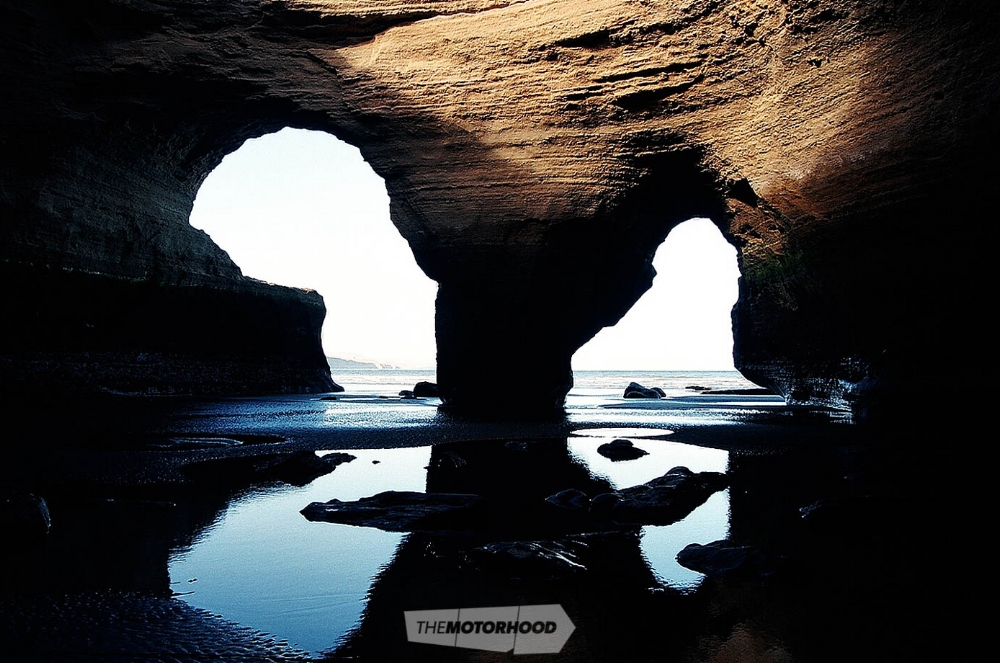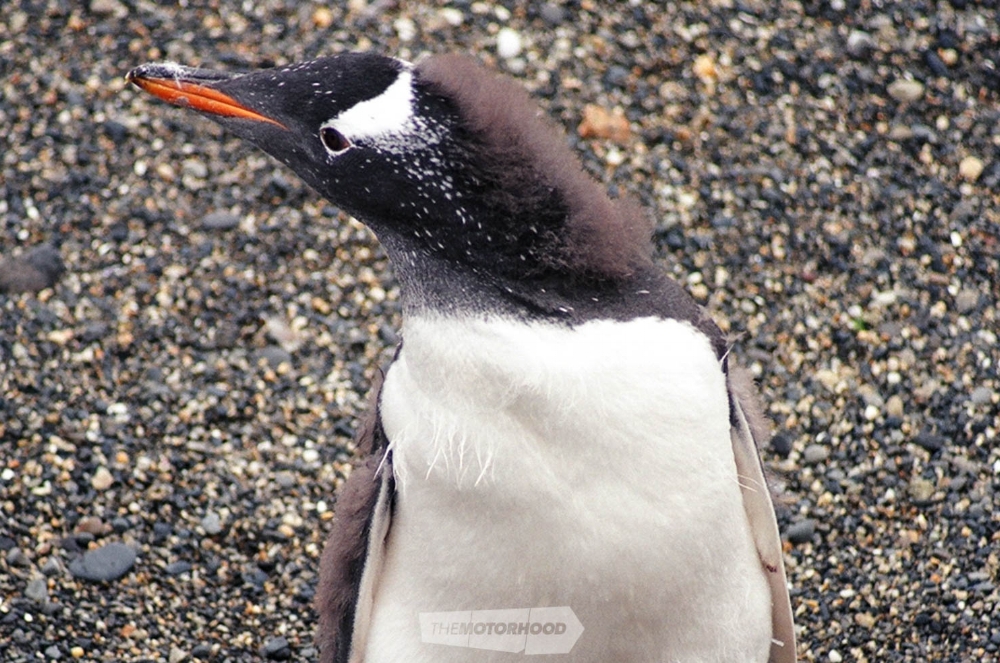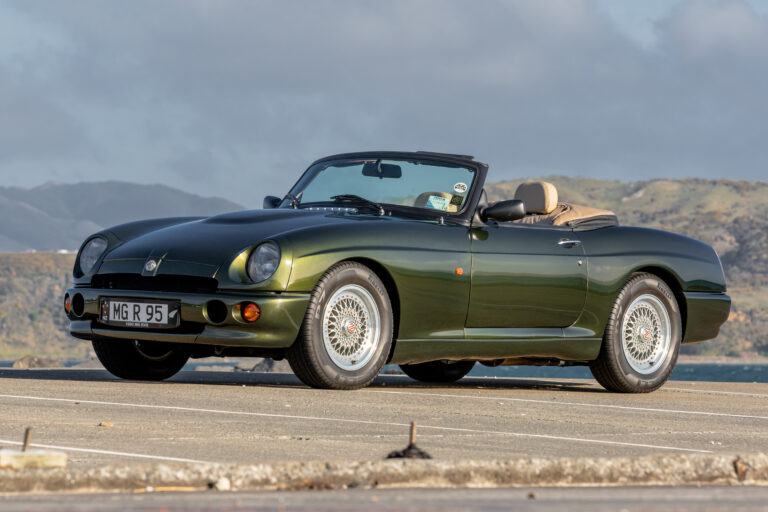Kiwis Rob Mumford and Aaron K drive a classic V8 muscle car from Buenos Aires to Ushuaia, the world’s southernmost city, on Argentina’s national Route 3, for a physical and spiritual journey via the history, geography, and people of Patagonia. Here, they share their story from the very start — take it away, Rob
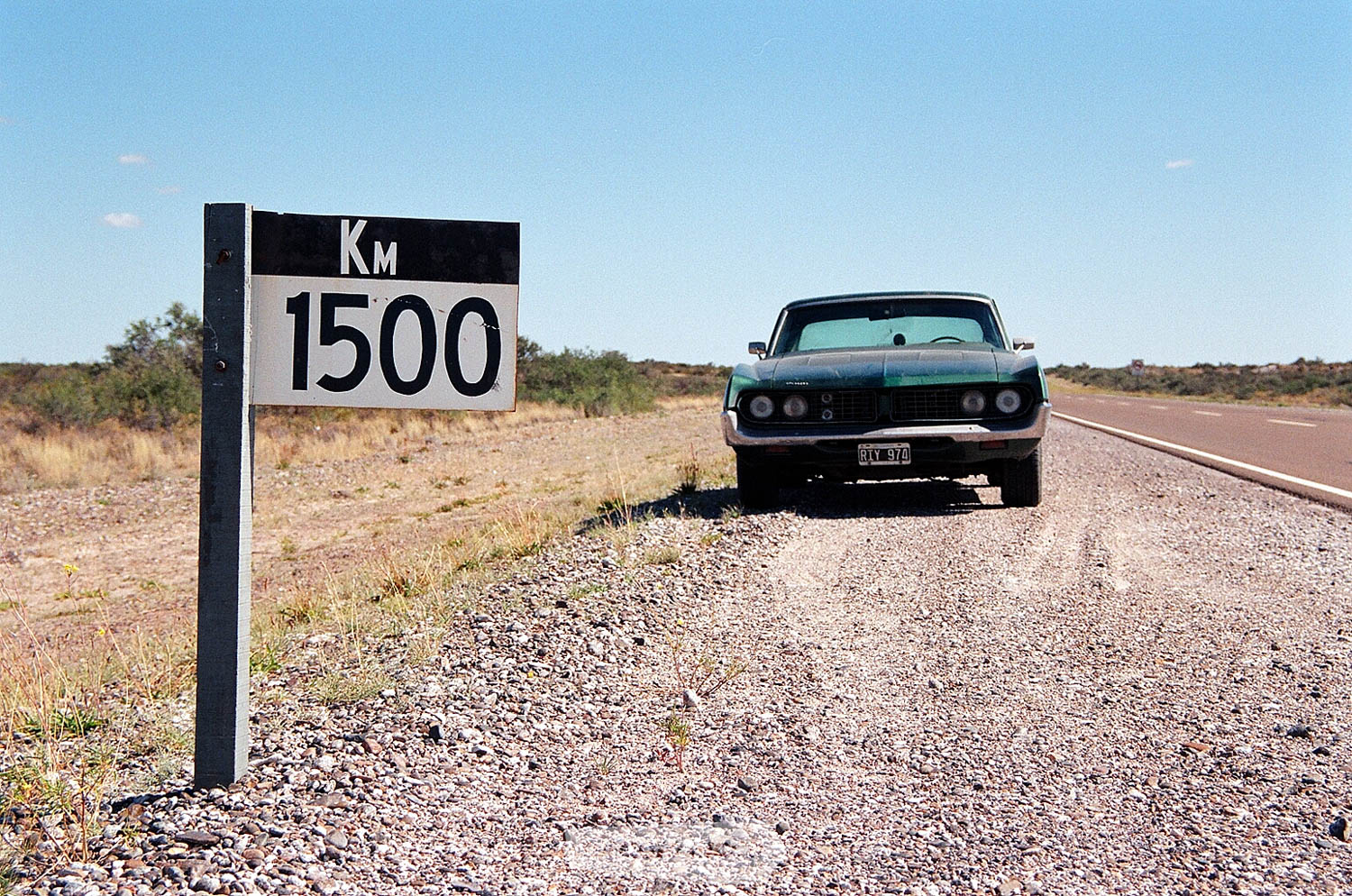
It’s a grey and humid Monday in Buenos Aires as we drive slowly across the city at the start of our journey. The Argentine capital is home to some 13 million people, and the streets are packed and noisy as the working week gets underway. Newspaper sellers walk between the rows of cars stopped at traffic lights, and bicycles and motorbikes weave in and out of the slow-moving mass. Impatient drivers shout and toot their horns. Apartment blocks rise up on all sides. Trucks and buses loom close, and our senses are assaulted by a constant barrage of sound and movement. Can’t wait to escape this chaos!
Argentina is a massive country, the eighth largest in the world, 10 times the size of New Zealand and over 4500km from north to south. Ushuaia, near the 55th parallel, is the world’s southernmost city, and some 1500km south of Invercargill! It’s here that the cone of the South American landmass tapers into the Beagle canal and the fearful waters of Cape Horn. Our aim is to reach Ushuaia, the end of the world, and the end of the road.After about an hour, we leave the capital and cross into the Buenos Aires province. Life on the edge of the capital is a difficult proposition, with migrants from neighbouring countries and rural areas arriving in search of a better life. With Argentina struggling to lift itself from a deep depression, many of them are unable to get work and are forced to live in makeshift and rudimentary houses. As the rain comes down, dirt and poverty run together in muddy streams at the sides of the roads.

We are now on Argentine National Highway 3, which travels from the edge of the city all the way to Ushuaia. It cuts across the fertile Pampas to the Atlantic port of Bahía Blanca and, from there, keeps within 100km of the coast all the way to Ushuaia. It’s over 3000km from start to finish, and we will travel 8000km in the next four weeks.Feeling free after escaping the city and traffic, we speed through the heart of the Argentine agricultural industry. It’s like driving through a gigantic field, and the only changes over 500km are the crops: from sunflowers to wheat to soy bean, and back to sunflowers again. It’s easy driving, and there is nothing much to look at outside. No navigation is required, as it’s straight through at all junctions.
As we speed along on the empty roads, I think of ex–US ambassador to Argentina Alvin Smucker. Back in 1971, he decided to bring out a brand-new Ford Torino V8 coupé to give him presence and a piece of home during his tour of duty here. When his term was up, Smucker returned home, but the Torino stayed. More than 30 years later, I saw it parked near my apartment and knew that I had found the perfect car to go south in. I stuck a Post-it to the windscreen: “Awesome car, if you are interested in selling, please give me a call”. A few weeks later, the Torino was mine, and my road-trip dreams were flowing.

Into Patagonia
Some 700km after leaving Buenos Aires, on the afternoon of day two, we reach the Colorado River. These silent waters mark the northern boundary of the mythical region of Patagonia. Portuguese explorer Magellan named this region in 1520, when he encountered the giant-sized Tehuelche Indians in the bay of San Julian. Patagonia means ‘Land of Giants’, and it’s highly appropriate that this Land of Giants is a vast and sparsely populated expanse that stretches to the end of the world. We stop and walk around the tranquil waters and tree-lined banks. It’s nice to talk to a bunch of happy local kids on their way home after a day’s picnic. Sadly, no giants are spotted!
Rainbows and colour-streaked skies light up the last hours of the day, and we arrive in Carmen de Patagones in darkness. This pretty town on the banks of the Río Negro has great views of the river from its steep hills and streets. We wander around the waterfront and feast on delicious Patagonian lamb. In the morning, we head out to the coast and the mouth of the Río Negro, and it’s here that we first experience the power and force of Patagonia. We stop at Patagonia’s original lighthouse, the Faro Río Negro. The wind is strong and the seas a stirred-up muddy brown, and it’s hard to see where sea meets sky. It’s magnificent to feel the unrelenting wind and look out across the Atlantic. It’s desolate and bleak here; I couldn’t be happier.
We take a detour down a canyon to a magnificent beach below high cliffs of sediment-layered rocks, each layer a different colour or shade. The sky reflects off the wet sand, and wind and sea have carved strange-shaped holes in the rocks. Two bridges allow fishermen access to a rock platform where they can cast out into the foaming seas. The photo in the tourist brochure shows these bridges shiny and new; we find them rusty and unsteady — how long had it taken for Patagonia to take its toll?
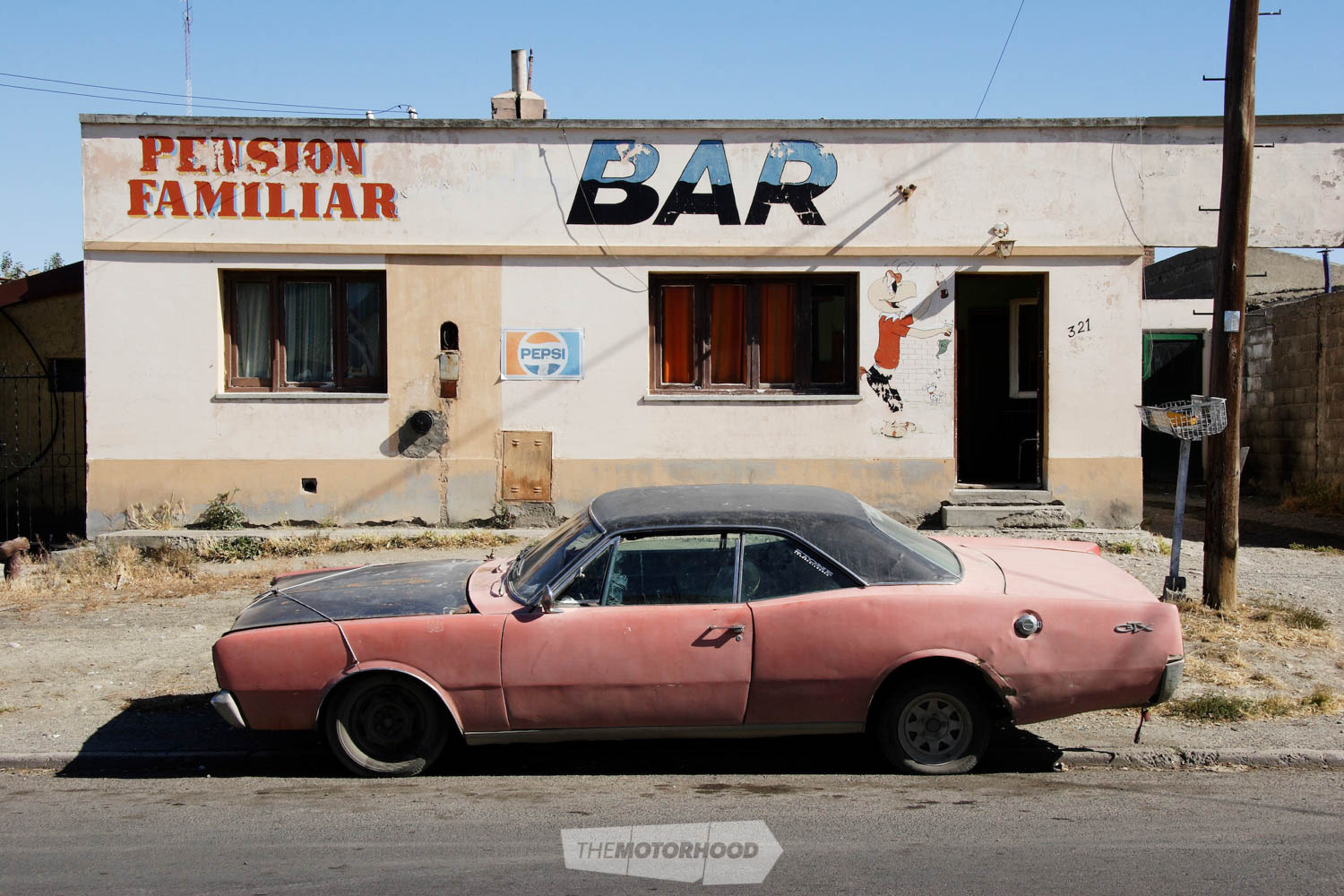
After a night in dusty San Antonio Oeste, and a swim at Las Grutas beach, we reach Puerto Madryn in the evening of our fourth day on the road. The next day, we drive out to the spectacular Peninsular Valdez and on to Punta Norte — it’s here, between February and April at high tide and on calm days, that killer whales deliberately beach themselves to capture and eat the young sea lions. We sit and watch expectantly for hours before admitting defeat. We will have to wait for another day to see this incredible and unique spectacle, as, while we see plenty of sea lions, not a single dorsal fin is sighted.
Some 1500km down Route 3, we head east to the pretty coastal town of Camarones. As we enter the town, the road’s gentle downward slope affords us a lovely view of the sheltered harbour and pebbled beach. The evening light is beautiful as it casts sharp shadows across the simple corrugated iron and wood constructions near the waterfront.
Out on the old wharf, fishing lines seeking the catch of the day angle down from the edge of the concrete. Scattered cloud shapes turn pink and orange in the setting sun, and the rippled sea darkens as evening is replaced by night. The gentle sound of wind and waves and the blanket of stars overhead create an incredible peace and oneness with nature.
From Camarones, it’s a rough 20km gravel road to Cabo dos Bahías and the penguin colony on the peninsula. Here we see thousands of Magellanic penguins — there are adults, juveniles, and young chicks. The chicks look like teenage fashion victims, as their downy feathers moult in strange punk-like patches to reveal their sleek dark swimsuits underneath.
We stop at what seems the world’s most isolated yacht club, at the beautiful and remote Caleta Sara. Eduardo, the manager, rushes out to greet us with a friendly smile and strong handshake, and welcomes us into the cosy restaurant. He tells us that he would rather say fish was off the menu than offer anything caught more than 24 hours ago. Lucky for us, the fish were biting today, and we tuck into a huge plate of delicious sea salmon.
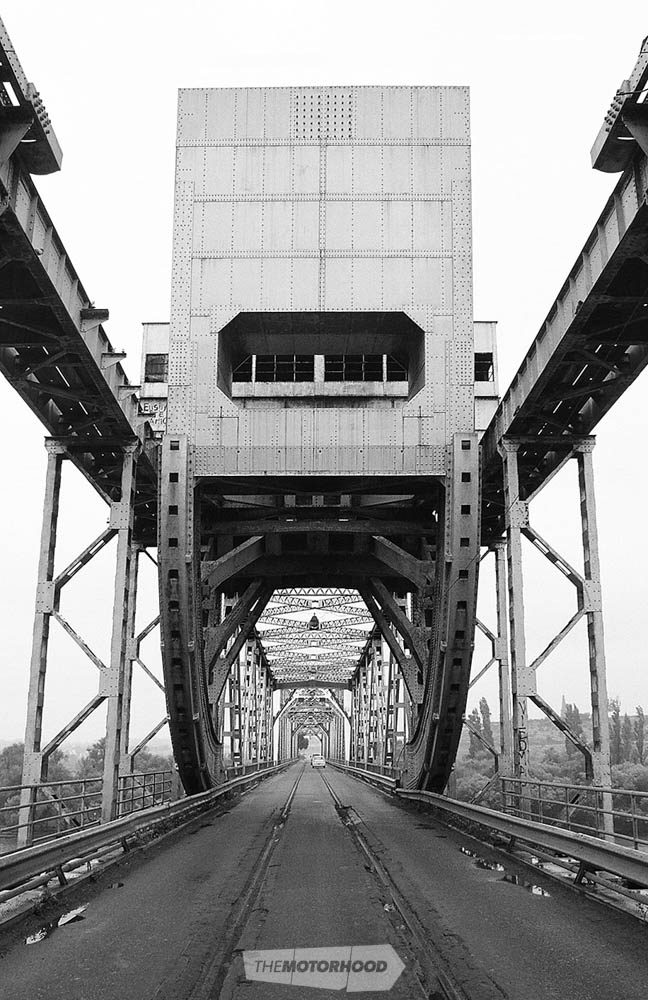
Seaweed, steamer ducks, and sea lions
It’s a slow and painful drive on a seemingly endless gravel road to reach Bahía Bustamante, 100km south of Camarones. This tiny town, with a population of 40, is dedicated to the harvest of seaweed for use in the food and cosmetics industries. We meet Matias Soriano, whose family founded the town, and who has lived and worked here for more than 50 years. Matias is doing a brilliant job of developing the town as an ecotourism destination. We check into one of four beautifully recycled houses just metres from the sea, and spend the evening talking and learning about the rich past and present of this surprising and beautiful bay.
After breakfast, Matias takes us out in the Zodiac. We skim over the water and cross the bay to visit some of the rocky islands. At Bird Island, we see penguins, cormorants, Antarctic pigeons, and the hilarious steamer duck. The steamer is a flightless duck that uses its feet as paddles. They look like they are desperately trying to fly, but remain fixed to the water and seemingly left behind by evolution! The next island is a sea-lion colony, with many animals from pups to adults. Around the back of the island, we put on snorkel gear and jump into the freezing water. Immediately, a couple of sea lions come to investigate. It’s an incredible experience to be with them underwater as they swim and perform acrobatics with speed and grace.
Next stop is San Julian, that famous spot where Magellan landed. As well as the first encounter with the giant-sized Indians, Magellan was witness to the first mass and first mutiny on Argentine soil. Here, we meet Ernesto, aka Barnacle Bill, our gregarious host at the Kau Yenu posada. With his white beard, weathered skin, and rolling Rs he sure seems like an old sea captain, but in fact has never been to sea. He tells us that if he doesn’t see us on our way back, he will see us in heaven: “I’ll have a hosteria there,” he announces confidently.The San Julian coast is rugged and spectacular. We drive the coastal road and explore deserted beaches and take in stunning views. We come to a lighthouse staring out at the endless sea and sky. The horizon separates the sky from the dark, mysterious ocean. It’s windy, wild, and breathtakingly beautiful. On this lonely lighthouse, someone has spray-painted, “If you love someone set them free, if they come back they are yours, if not, tough shit!” Seems a pretty appropriate reflection from this desolate and mesmerizing spot.
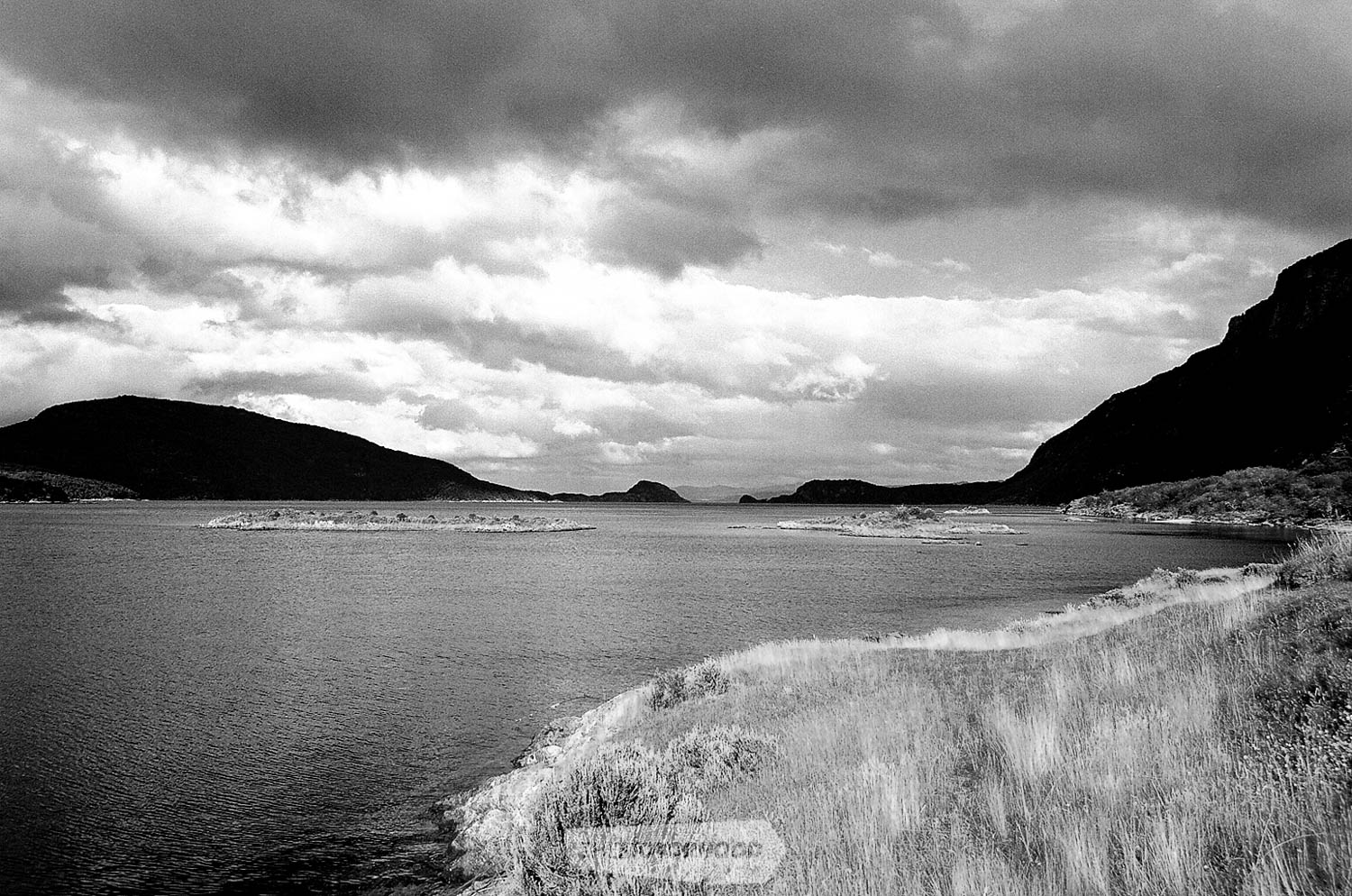
Isla Pavón is an island oasis in the middle of the Santa Cruz River. It’s the first place that we have seen trees and green grass since we’ve been in Patagonia. The island is watered by the pale glacial waters of the Santa Cruz and is an amazing contrast to the mostly barren and empty landscapes that Route 3 passes through. It’s great to walk beside the swift blue river and hear the wind rustling the leaves in the trees.
We have now travelled more than 2500km south since leaving Buenos Aires. The Torino is running superbly and, with her powerful V8 and graceful lines, is the perfect car for the flat, straight, and empty Patagonian highways. The only sounds as we cruise along are the low hum of tyres and engine, and the rushing of the wind. The slowly changing landscapes add a strange meditative quality to our stints at the wheel. Time seems to stand still as the tarmac disappears below the car, but the horizon remains fixed in the distance.
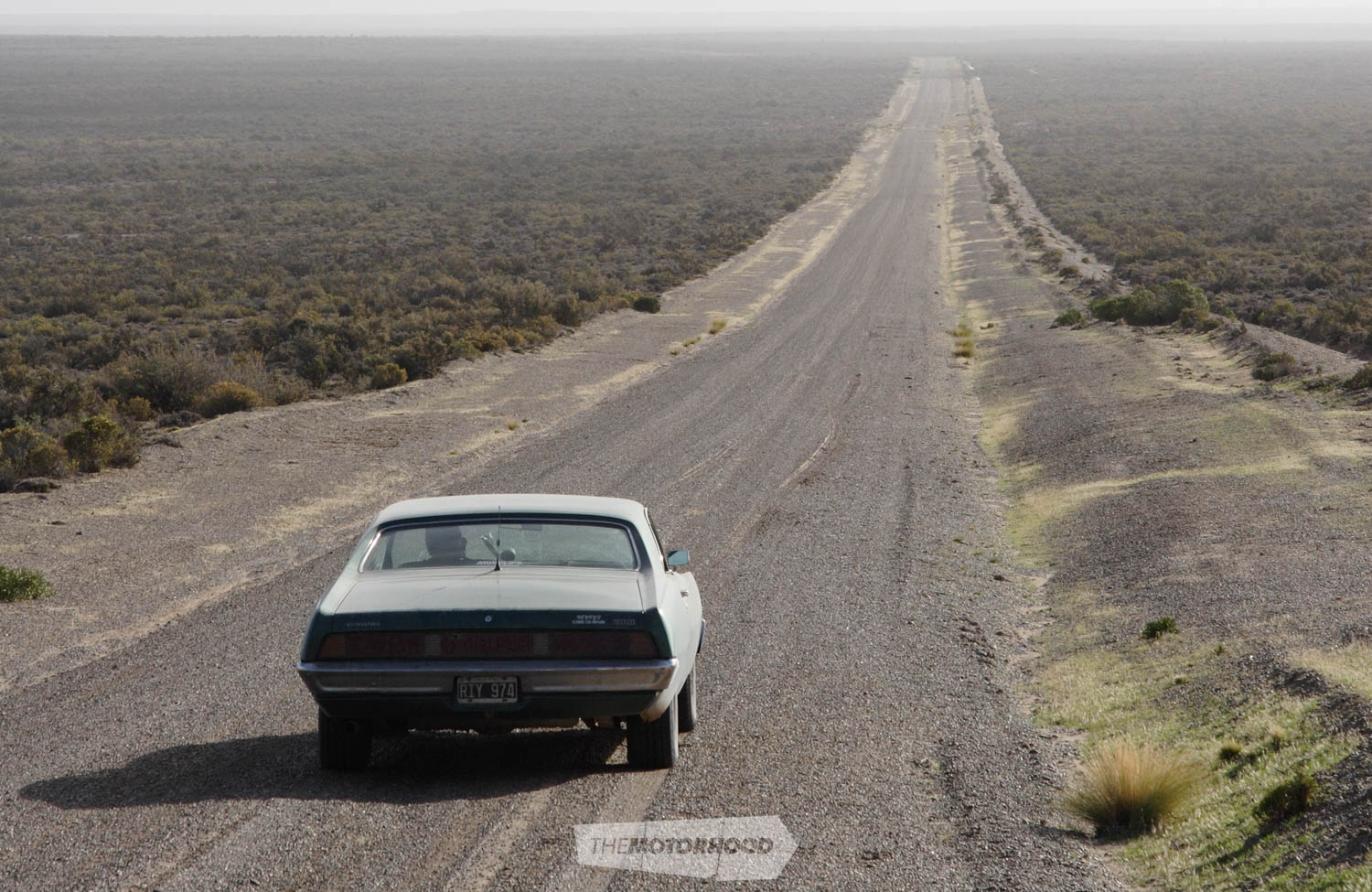
Rock meets windscreen
There is little traffic, but we have to hold on tight when passing oncoming trucks, as we are blasted and shaken by their invisible slipstreams. Passing one of these, a stone is flung up and sent spinning towards my head, I duck instinctively and it slams into the windscreen, spraying me with glass shards. The silence is deafening, and I can hear my heart’s accelerated beat as we pull over to inspect the damage. The stone has left a spider web pattern of cracks that will grow for the rest of the trip, but, luckily, there is no danger of a collapse, so we head quietly south again.
It’s getting colder the further south we get, and, after a night in freezing and windswept Río Gallegos, we cross the border into Chile, and head towards the Island of Tierra del Fuego. From Punta Delgada, it’s a 30-minute ferry trip across the windy straights of Magellan to Tierra del Fuego: it’s a brilliant feeling to be on this mysterious land. The tyres hum on the concrete curves of the Chilean highway, and the air inside is filled with the melancholic beats of Crowded House … “you will never see the end of the road while you are travelling with me”. We speed up as we feel the end of the road getting closer and closer.
Unfortunately, we hit the end of the seal before the end of the road, and have to slow down to a painful crawl on a patchwork of rock, ruts, and potholes. It’s a torturous next 100km as we are caught between a great desire to get off this wretched road as fast as possible and a need to drive slowly and preserve the car. At times, it feels like the Torino will be shaken to pieces as we bounce along painfully and noisily. After hours of slow pain, we creep into San Sebastian and spend a quiet night in Chile at a lovely farm homestead. I can still feel the bumpy motion as I flit between sleep and thoughts of the rocky road ahead. In the morning of our 15th day, we cross borders again and are back in Argentina with less than 400km to go to Ushuaia! Thankfully, the road is sealed, and, excited by the prospect of reaching the end of the world, we zoom along through mist and low cloud.
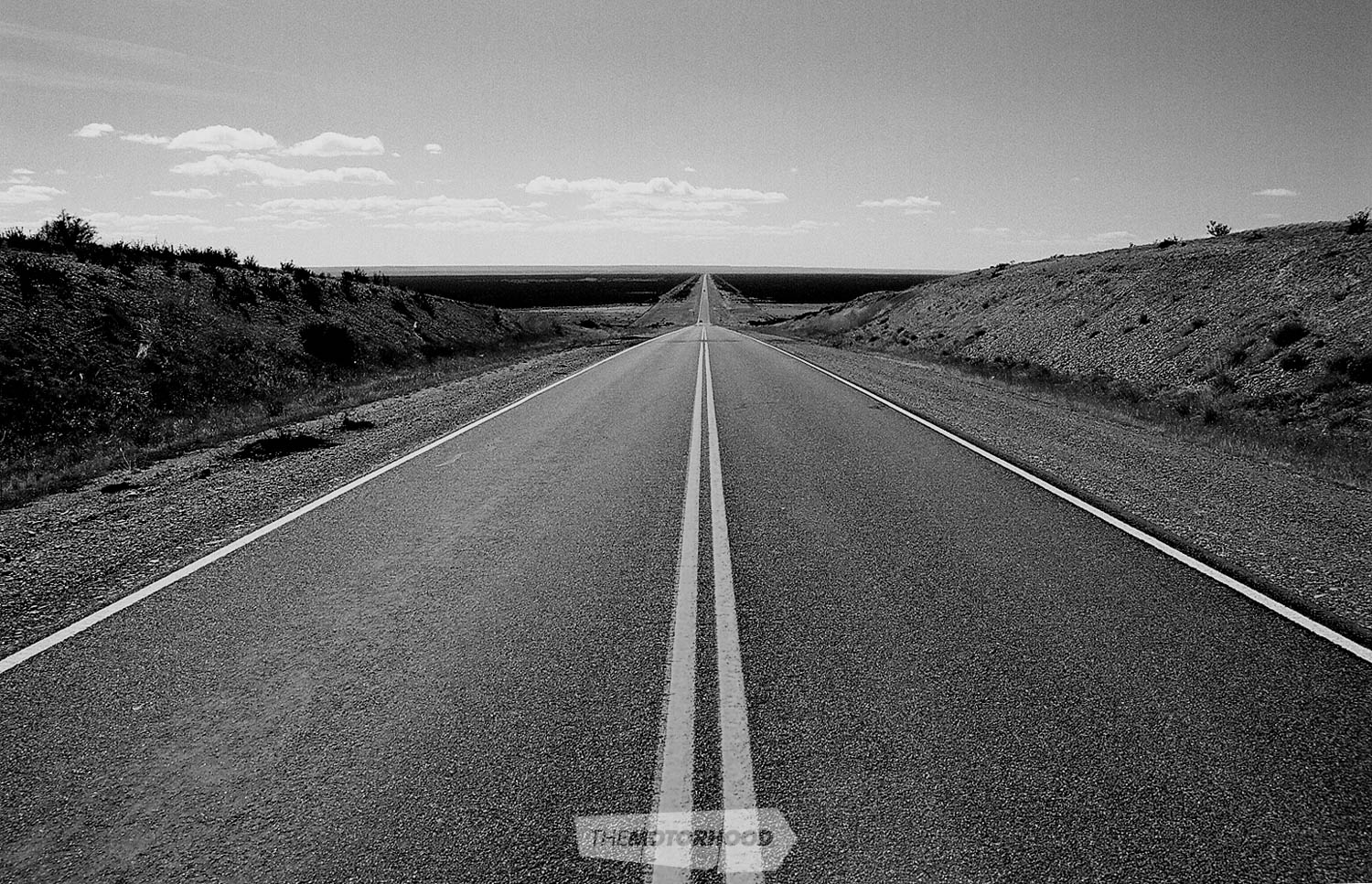
Suddenly, the engine dies, and end-of-the-world thoughts vanish as we coast quietly to a halt at the side of the road! Rain is falling as we look under the bonnet and wonder if we will make it to Ushuaia. We don’t see anything amiss, and, after a couple of attempts, manage to get the engine started. We decide to keep going. It stalls another four or five times before arriving in Río Grande, where it dies completely at a roundabout, and we have to get out and push. We call a mechanic, and meet the beaming and super-friendly Patagonian Rally champion Ramón Benítez. It doesn’t take Ramón long to locate and fix a problem with the electrics, and we are soon heading south again.
For the first time on the road, there are trees on each side — strange haunted forests of silver trees with long lichen beards hanging from dead branches. The scenery is now dramatically different from anything so far. Huge green mountains rise up in the distance, and the glistening Fagnano Lake accompanies us to the foot of the Andes mountains. We climb slowly up the winding Garibaldi Pass and have stunning views of the lakes below.
At the top of the pass, we breathe in the cool Andes mountain air before coasting down the other side. It’s exhilarating as we silently twist and turn through the last curves, past ski lodges and tourist hotels. We are so close now that if anything happens to the car we can push it to the finish line!We round a corner, and our eyes light up as we see ahead the signpost welcoming us to the world’s southernmost city! We yell and shout in celebration, and, after 15 days and over 4000km, it’s a brilliant feeling to reach Ushuaia. It’s a cold, wet, and windy night at the end of the world, but we feel only warmth and contentedness.

The end? Or just the beginning?
It’s an amazing feeling standing at Lapatia Bay and gazing out into the Beagle Channel, the biting wind sends ripples across the bay, and I shiver from both cold and emotion. Nature’s unspoiled beauty is all around, and I feel humble and euphoric in the presence of such magnificence. As I turn away and walk back to the car, I shut my eyes but can still see the outline of the bay and surrounding hills.
From the end of the road at the bottom of South America, there is only one way to go now, and that’s north. As we drive slowly back into town, an idea comes into my head. How about driving the Torino from Argentina all the way to the US!? That would be bloody brilliant. Yes, I will do it! Can’t wait! Hasta la vista! Hasta pronto!
This article was originally featured in NZ Classic Car issue No. 322 — You can purchase a print copy at the link below


